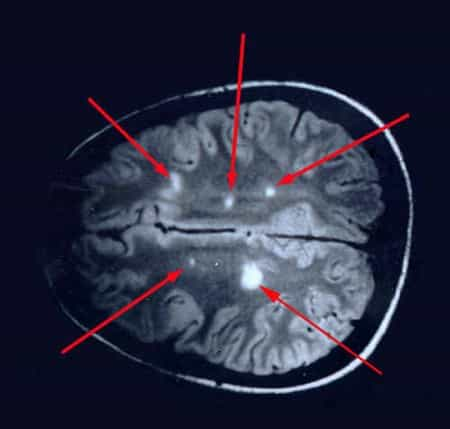From personal experience I have been able to verify that in recent years Multiple Sclerosis (MS) increasingly affects early onset, therefore very young people, but I have also been able to appreciate, having worked in a Research and Treatment Center for Multiple Sclerosis, that State-of-the-art therapies visually slow its progression, thus also increasing the quality of life of people with MS. Multiple Sclerosis (MS) is a chronic inflammatory, autoimmune disease that attacks the central nervous system , it is estimated that there are over 400,000 patients in Europe alone, especially young adults. It occurs due to an attack by the immune system itself on the tissues of the organism itself, which is why it is called " autoimmune ". In this specific case, the object of the attack is the myelin sheath which covers the nerve cells and allows the transfer of the signal from one to the other, allowing muscle movement. At the last conference held in Milan by the European Society of Neurology, an innovative study was illustrated which would allow therapy with a few pills a day for 4-6 days a week, with a second cycle a month later and then nothing more for a year. The drug is based on Cladribine, a substance that acts selectively on lymphocytes, generating targeted and long-lasting immunomodulation whose effects last for a year; it is a revolutionary drug because it frees the patient from daily therapy with a prolonged administration over time, but also because it has demonstrated double efficacy, showing an 80% reduction in lesions on magnetic resonance imaging after six months and an 85% decrease in attacks %.
You may also like
Dental Implants: Methods, Treatments and focusing on younger patients
Dental implants have revolutionized dental care, offering a potent solution for tooth loss. This article delves into the methods and treatments available, focusing on younger patients, under 55, while exploring new research studies that could redefine dental implantology.
Dental Aligners: Treatment Options for Adults
Dental aligners have revolutionized orthodontics, offering adults a discreet solution to teeth misalignment. This article explores various methods and treatments available, challenges faced by adults, and emerging studies in experimental aligners. Additionally, it delves into regional trends and geographic incidence of treatments.
Dental Implants: Modern Techniques and Emerging Research
Dental implants have revolutionized the field of dentistry, providing patients with robust solutions for replacing missing teeth. This article delves into various methods and treatments available for dental implants, particularly focusing on challenges faced by individuals under the age of 55. Additionally, it explores cutting-edge research and new developments in implant technology, including experimental studies. The piece also examines the geographical distribution and incidence of dental implant procedures globally.
Dental Implants: Transforming Smiles Across Generations
Dental implants have revolutionized the way we approach oral health restoration, offering renewed hope to those suffering from tooth loss. This comprehensive article delves into the methodologies and treatments available, particularly focusing on challenges faced by individuals over 55 years. It also explores cutting-edge research and the geographical incidence of implant procedures globally.
